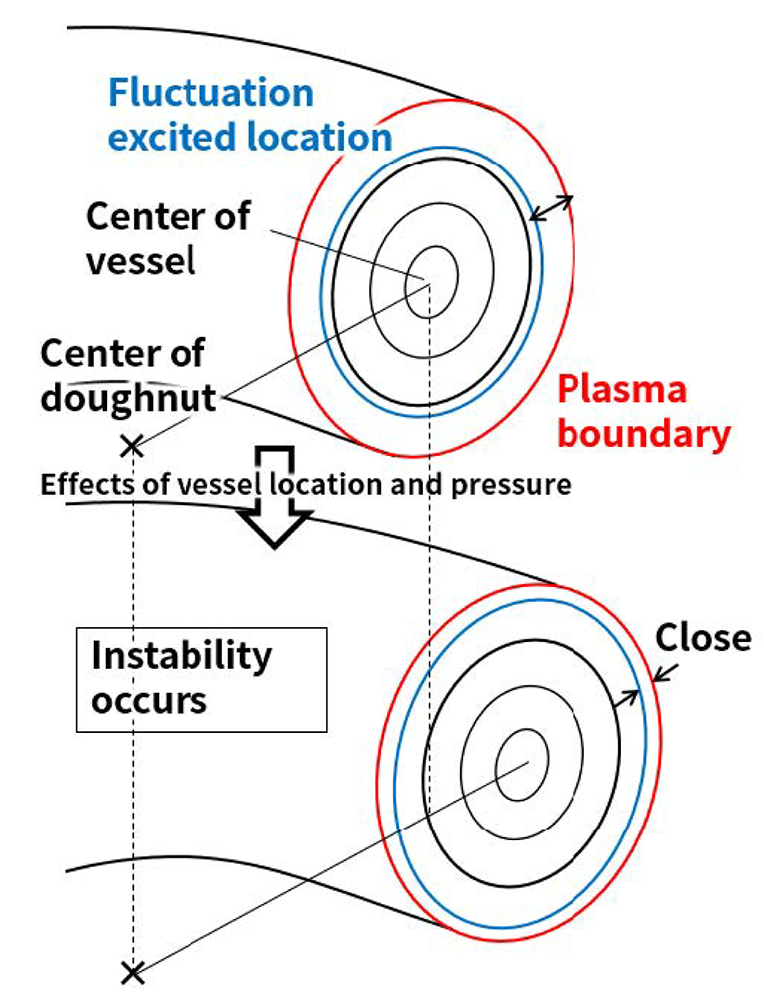Identification of onset conditions of fluctuations leading to plasma collapse
In relatively high-density plasmas of the Large Helical Device, plasma fluctuations grow rapidly, resulting in significant degradation of the confinement property. It has been clarified that such instabilities can grow rapidly when the fluctuations occur close to the plasma boundary. This result will greatly advance research to clarify the onset mechanism of the instability that prevents the realization of fusion reactions.

In the Large Helical Device, plasma fluctuations can occur because of the energy source of the pressure gradient. Typically, these fluctuations saturate at relatively low amplitudes and do not cause rapid degradation of the confinement property. However, as the density increases to relatively high values, the saturation amplitude of the fluctuations becomes so large that the pressure gradient at the location of the fluctuations degrades, causing the central pressure to drop. Since such instabilities prevent the realization of helical-type fusion reactors, it is necessary to understand under what conditions they occur.
Our research team has identified the experimental conditions under which instabilities occur, by varying the shape of the magnetic field vessel and a wide range of plasma parameters. When the position of the doughnut-shaped magnetic field vessel is changed by external coils, instability occurs only when the position is at a certain distance from the center of the doughnut. In other words, if the magnetic field vessel is too close or too far from the center of the doughnut, no instability is observed. In addition, as the distance from the magnetic field vessel to the doughnut center increases, the plasma pressure at which the instability occurs decreases. Since it is known that the location of the fluctuation, which is the source of the instability, moves toward the plasma boundary, as the distance from the magnetic field vessel to the doughnut center increases, or as the plasma pressure increases, this result indicates that the instability occurs only when the fluctuation is excited near the plasma boundary, due to the combination of the magnetic field vessel location and plasma pressure effects (see Figure).
Simulation studies suggest that the instability is expected to grow when the fluctuations are located slightly outside the boundary. The observation is consistent with this simulation in that the instability appears when the position of the fluctuation is close to the plasma boundary.
This result provides an important insight into the clarification of the onset mechanism of the instability with collapse.
This research result was published on September 21, 2022 in Physics of Plasmas, a journal of the American Institute of Physics.
